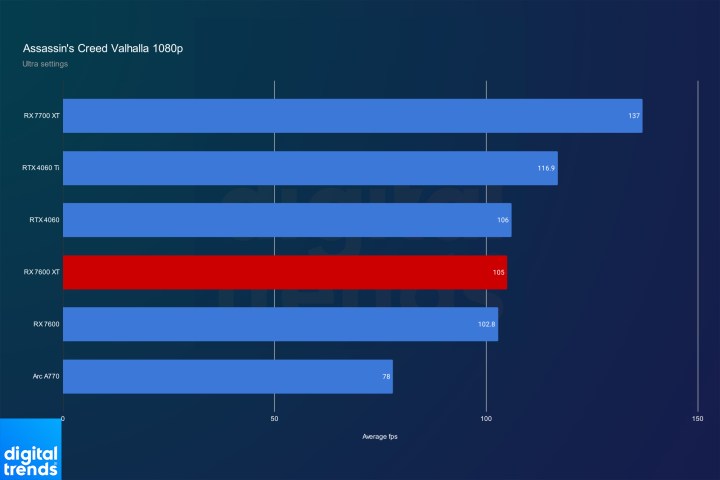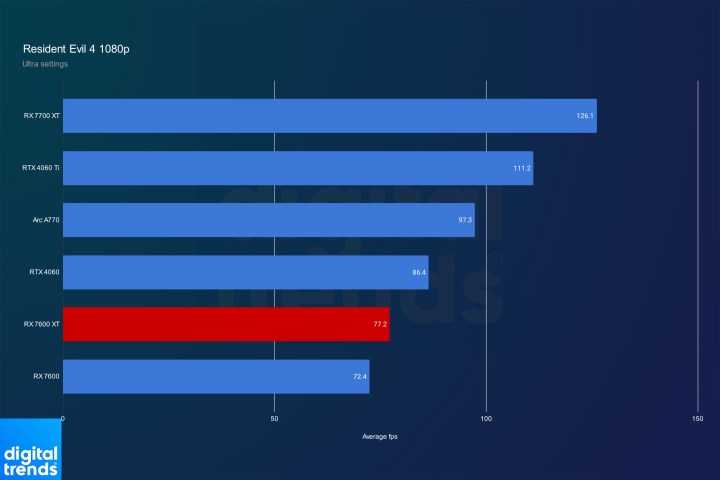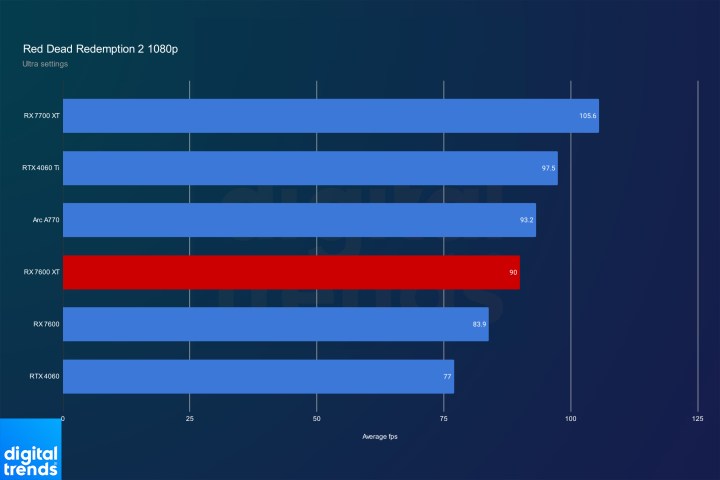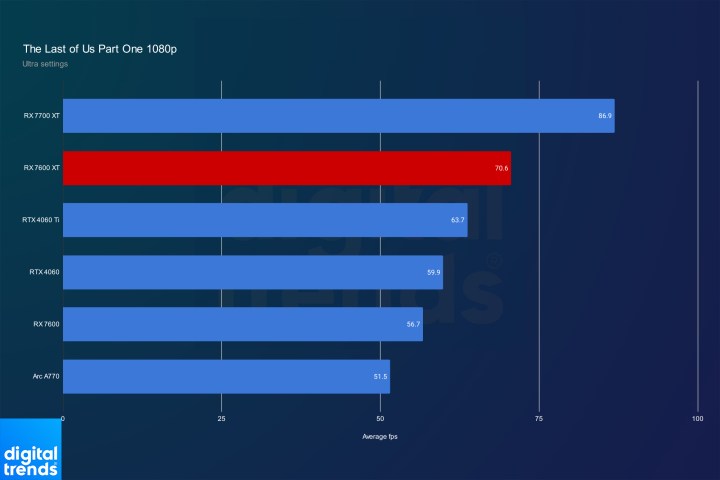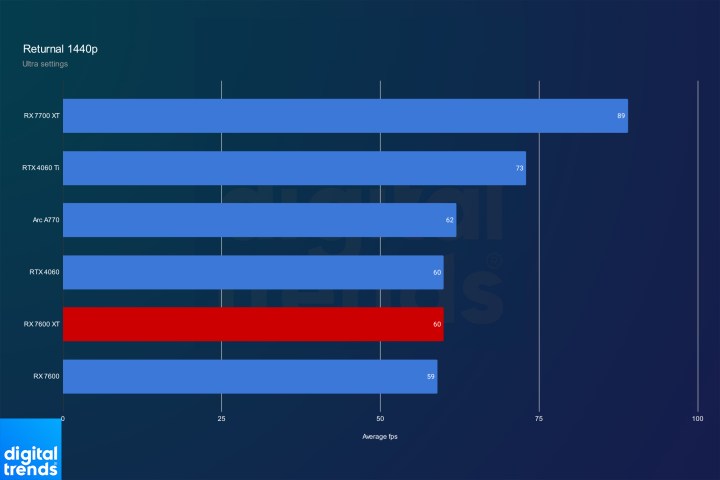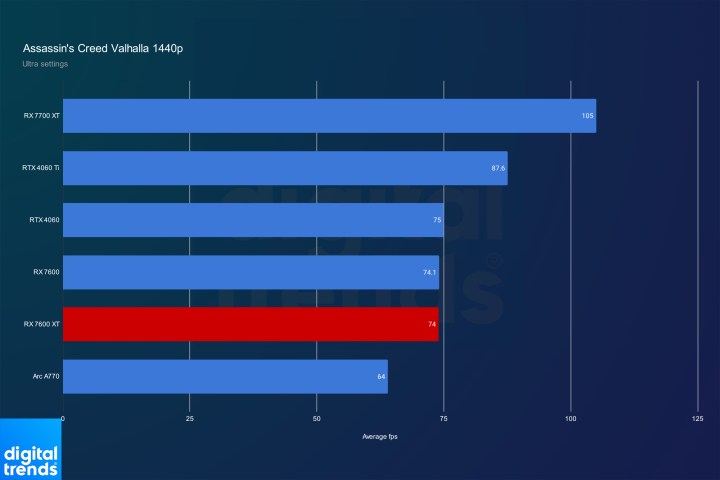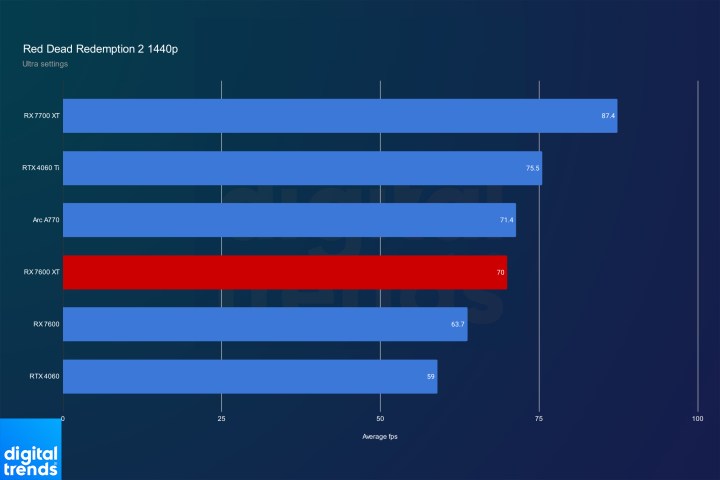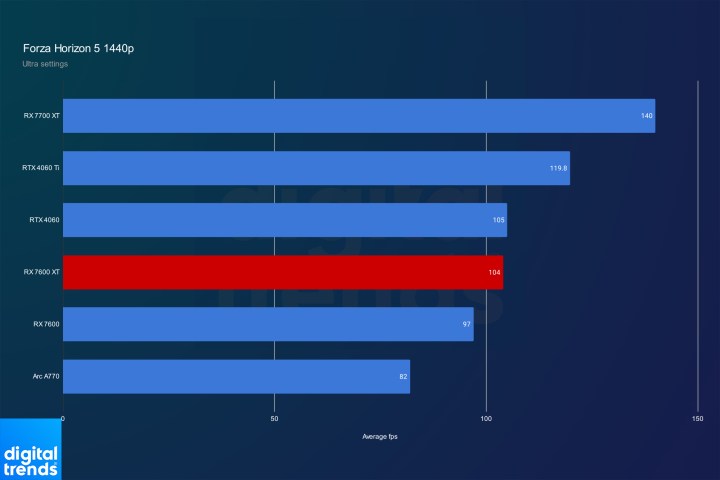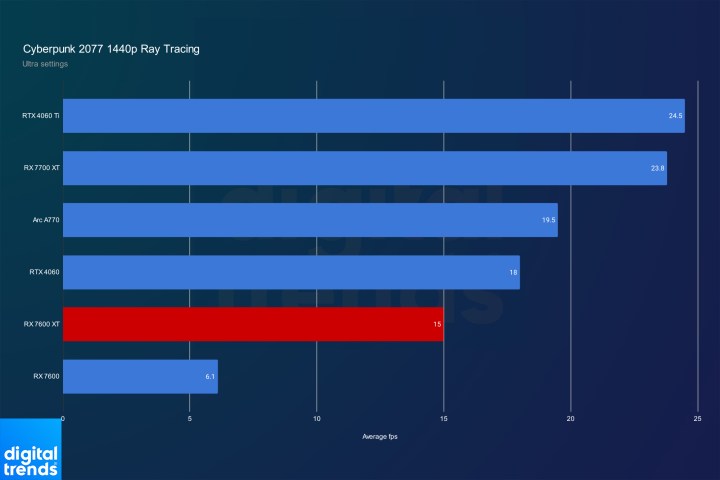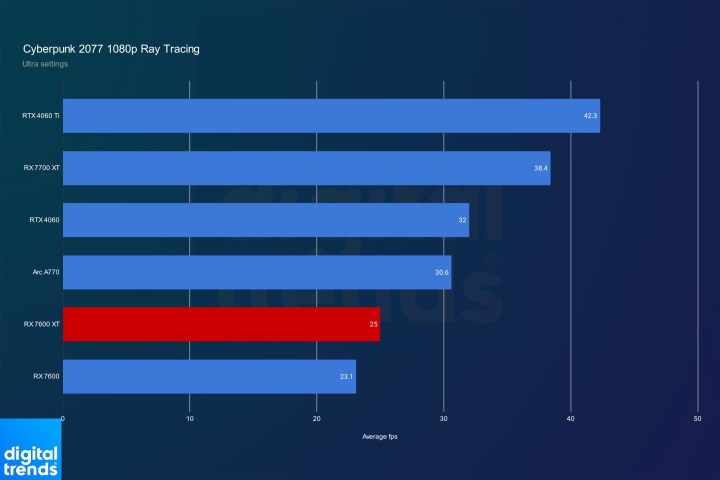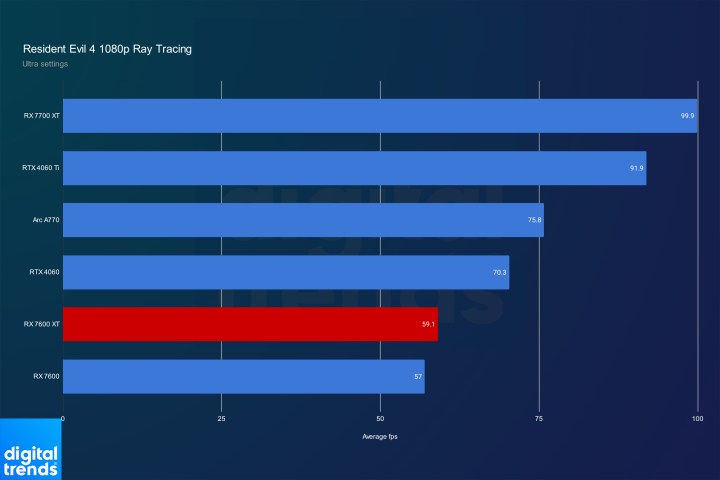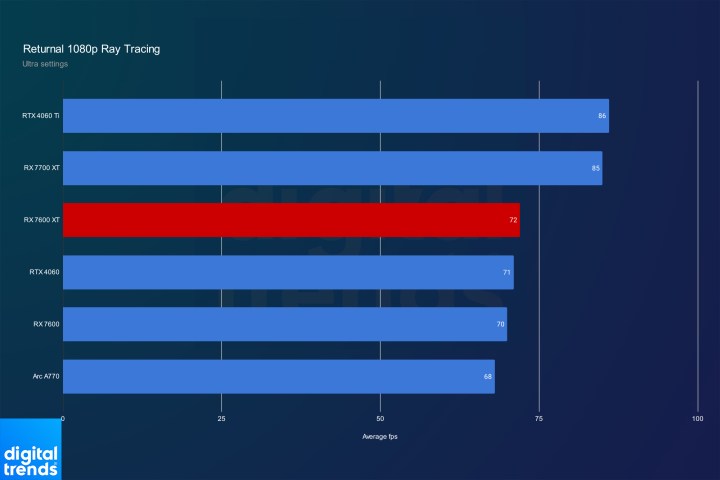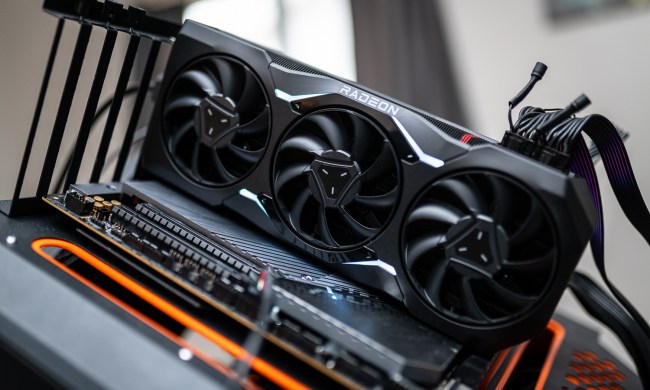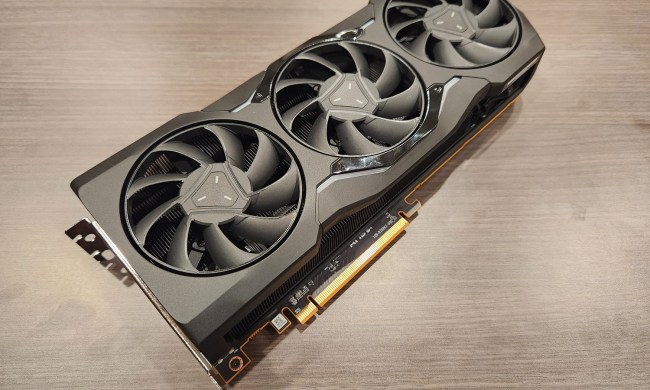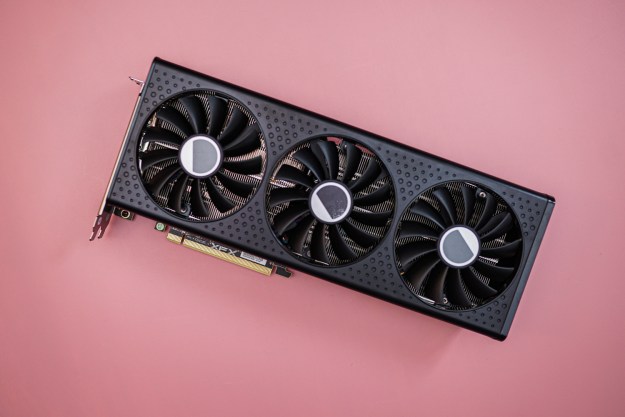
“The RX 7600 XT trades too much away to achieve higher performance in a small subset of games.”
- Driver-based frame generation
- Much better ray tracing performance
- 16GB of VRAM makes a difference in some games
- Too expensive
- Loses in performance to Nvidia and Intel competition
Reviews are a time for clarity. The marketing buzz has faded, we’ve had a chance to test the product, and we’ve come to some understanding about it. Despite that, I’m still as baffled by AMD’s RX 7600 XT as I was when the company first announced it.
In some ways, it looks like an answer to the upward trend in prices we’ve seen among the best graphics cards. Coming in at $330, it’s a far cry from the barrage of high-end GPUs we’ve seen with Nvidia’s recent Super refresh. Although the RX 7600 XT comes in at a much more affordable price, and with an impressive memory spec in tow, it doesn’t put up the numbers to justify its spot among budget-focused GPUs.
Specs

The RX 7600 XT, as you might imagine, is an enhanced version of the RX 7600. It comes with the XT branding to note it’s a faster version, as well as a $60 price bump over the base model. And surprisingly, those are two of the most significant differences between the two GPUs: the name and the price.
You’re getting the same number of compute units and ray accelerators, as well as a similar clock speed. The Game Clock speed, which AMD uses to note the average frequency when running games, sees a nice 220MHz bump. However, as far as maximum boost clock speed goes, the XT model is only 100MHz above the base model, which you could make up for with some manual GPU overclocking.
| RX 7600 XT | RX 7600 | |
| Compute units | 32 | 32 |
| Stream processors | 2,048 | 2,048 |
| AI accelerators | 64 | 64 |
| Game clock | 2.47GHz | 2.25GHz |
| Memory | 8GB GDDR6 | 16GB GDDR6 |
| Memory speed | 18 Gbps | 18 Gbps |
| Memory bus | 128-bit | 128-bit |
| TDP | 190W | 165W |
The big difference in specs is the memory configuration. This XT model comes with 16GB of GDDR6 memory, doubling the 8GB we see on the base model. However, AMD strangely opted to use the 128-bit memory bus on the XT model, along with the same 32MB of Infinity Cache. There’s more memory capacity here, but the overall memory interface hasn’t changed much.
In addition to a capacity bump, AMD bumped up the power a bit from 165 watts on the base model to 190W on the XT model. Based on my testing, I suspect that power bump has a lot to do with the minor performance increase the RX 7600 XT offers. However, only a select few games showing the benefits of its 16GB of memory.
Synthetic performance

Let’s start with some synthetic benchmarks to lay the groundwork with the RX 7600 XT. In 3DMark Time Spy, which is an aging DirectX 11 benchmark, the XT model ends up just 5% faster than the base model. That’s 5% extra performance for a 22% increase in price. AMD’s last-gen RX 6700 XT, which is available for around $350 now, comes in at 11% faster than the RX 7600 XT.
Intel’s Arc A770, which is also hovering around $300, is faster as well. Intel’s GPUs show abnormally large performance improvements in 3DMark, so keep that in mind for this test. As for Nvidia’s $300 RTX 4060, it’s behind all the current-gen cards priced at around $300. That’s a mark that the base RX 7600 clears, too, however.
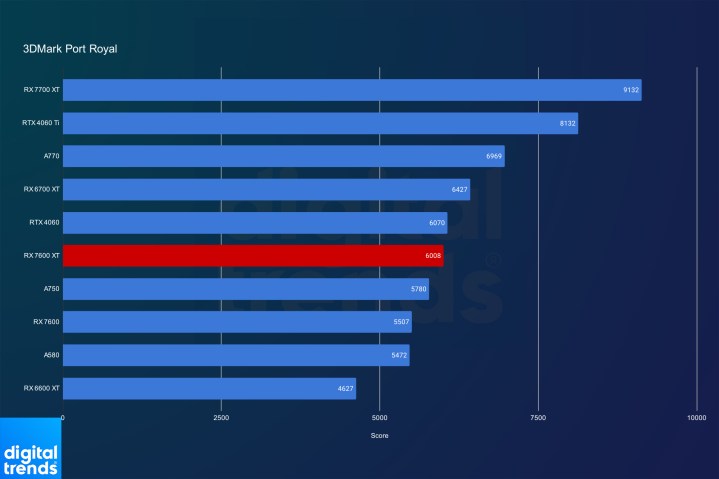
Moving on to a more modern benchmark, the RX 7600 XT is able to stretch its legs more in 3DMark Port Royal. It ends up 9% faster than the base model, likely due to the extra memory. This is a ray tracing benchmark, and ray tracing likes a lot of VRAM.
Even so, it’s clear AMD is in second place in
1080p gaming
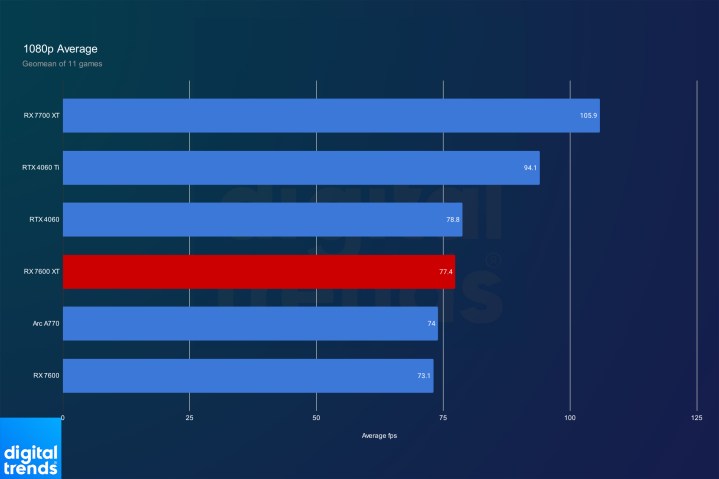
At $330, the RX 7600 XT is in a class of premium 1080p GPUs. Compromises should be few and far between at this resolution considering the asking price. Even so, the RX 7600 XT barely manages to move the needle compared to the $270 RX 7600. Overall, it’s close to 6% faster. That’s a fine improvement, even if a bit unexciting considering the price hike, but the benefit doesn’t exist across most games.
In Cyberpunk 2077, which is a game that has shown AMD’s current-gen GPUs in a positive light, the RX 7600 and RX 7600 XT posted identical frame rates. That’s not the only example, either. The XT model is just one frame ahead in Returnal, and a minor two frames ahead in Horizon Zero Dawn.
It’s clear the extra memory isn’t doing much in a lot of games, but there’s some competitive context here, too. In a game like Assassin’s Creed Valhalla, you can see Nvidia’s RTX 4060 providing basically an identical frame rate for $30 less. It’s rare to see Nvidia in a position of offering better value with a GPU compared to AMD. Even more surprising is that the RTX 4060 was a lukewarm GPU in its own right.
There are games where the RTX 4060 shoots ahead, too. In Resident Evil 4, it’s a massive 12% faster than the RX 7600 XT. At least we see some improvements that the XT model brings over the base model in this game, as it provides a respectable 7% improvement.
That’s not the only game where I saw some improvement. Red Dead Redemption 2 also showed the RX 7600 XT 7% ahead of the base model — and it even beat the RTX 4060 by double digits. Unfortunately, the RX 7600 XT loses out to Intel’s $300 Arc A770 in this game, which also comes with 16GB of memory for games that want it.
By far, though, the biggest improvement for the RX 7600 XT is The Last of Us Part One. There’s a 26% improvement in average performance, and it all comes down to the extra VRAM. I include this game in my test suite as a VRAM test, and it’s exactly for situations like this. You can see how important that extra capacity can be.
That said, it’s only one of many factors in a final buying decision. The strength of the base RX 7600 wasn’t that it was the fastest around — it was that it came in at $270, undercutting all the competition while offering competitive performance. The RX 7600 XT lands in a much different spot. At $330, AMD is now asking a premium over the RTX 4060 and Arc A770 without a clear performance advantage.
1440p gaming
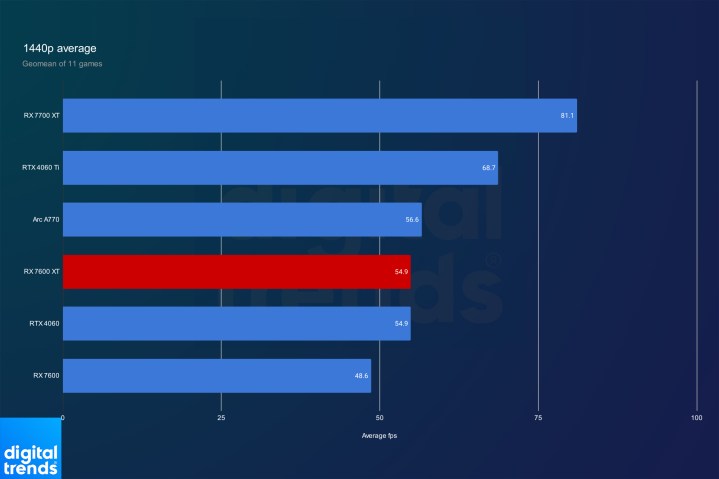
Up at 1440p, the RX 7600 XT shows a larger improvement over the base version, climbing up to 13%. That makes sense given that a higher resolution will stress VRAM more, but once again, The Last of Us Part One is the outlier here. For competitive performance, the RX 7600 XT lands at the same spot as the RTX 4060 and 3% behind the Arc A770, while costing $30 more.

Once again, we see a massive jump in The Last of Us Part One. This time around, the RX 7600 XT is around 28% faster than the base model. It even outpaces the RTX 4060 Ti, which is a $400 graphics card.
That’s where the praise ends, however. In Assassin’s Creed Valhalla, the RX 7600 XT posted identical performance to the base model, and it was a frame behind the RTX 4060. Returnal shows this same dynamic at play, though Intel’s Arc A770 is able to take the lead in this title with a frame rate above 60 frames per second (fps).
There are games where the RX 7600 XT is able to show some improvement over the base model, however. Forza Horizon 5 is one example, with the XT model providing an uplift of around 7%. However, the RTX 4060 offers identical performance for less money. Similarly, in Red Dead Redemption 2, the XT model is ahead of the base version by close to 10%. But the Arc A770 is able to claim a small win, once again for less money.
Results with Horizon Zero Dawn and Cyberpunk 2077 aren’t as positive. In Horizon Zero Dawn, there’s no improvement with the XT model, with the RTX 4060 once again taking a win over AMD. Worse, in Cyberpunk 2077, the XT model was actually half a frame behind the base version. To be clear, you should take that as identical performance, but it’s a good showcase of how similar the XT and non-XT versions of this GPU are in many games.
Ray tracing and upscaling
One area that benefits from extra VRAM is
It’s enough to get AMD back in the fight when it comes to
Cyberpunk 2077 is a stress test, but the performance delta between the RX 7600 XT and the competition makes a big difference in other games. In
Returnal shows a more optimistic view of the card, but the best result in
Although the RX 7600 XT succeeds compared to its predecessor when it comes to
That said, the RX 7600 XT has a small advantage over those two GPUs. It supports AMD’s Fluid Motion Frames, which provides frame generation through AMD’s driver. It’s not as good as Nvidia’s DLSS 3.5, but it’s a quick shortcut to extra performance.
Unfortunately for the XT model, the base RX 7600 also supports this feature. Considering that, and the clear value issue with the XT model, it’s still not winning the day in
Should you buy the RX 7600 XT?

It may sound like splitting hairs, but the RX 7600 XT should be $300. It’s too expensive at $330. Even at $30 more than the competition, AMD is declaring that it has a clear, undeniable advantage over the Arc A770 and RTX 4060. And the numbers just don’t back that up.
If anything, the RX 7600 XT pushes buyers toward a GPU like the RX 6700 XT, Arc A770, or RTX 4060. The RX 7600 was able to squeeze by due to its low pricing compared to the competition, but the RX 7600 XT doesn’t uphold that tradition.
There are some benefits of the RX 7600 XT, particularly in those VRAM-heavy titles like The Last of Us Part One. However, the RX 7600 XT makes a lot of concessions to achieve higher performance in that small subset of games, and most PC gamers are better off with another GPU priced at around $300.




